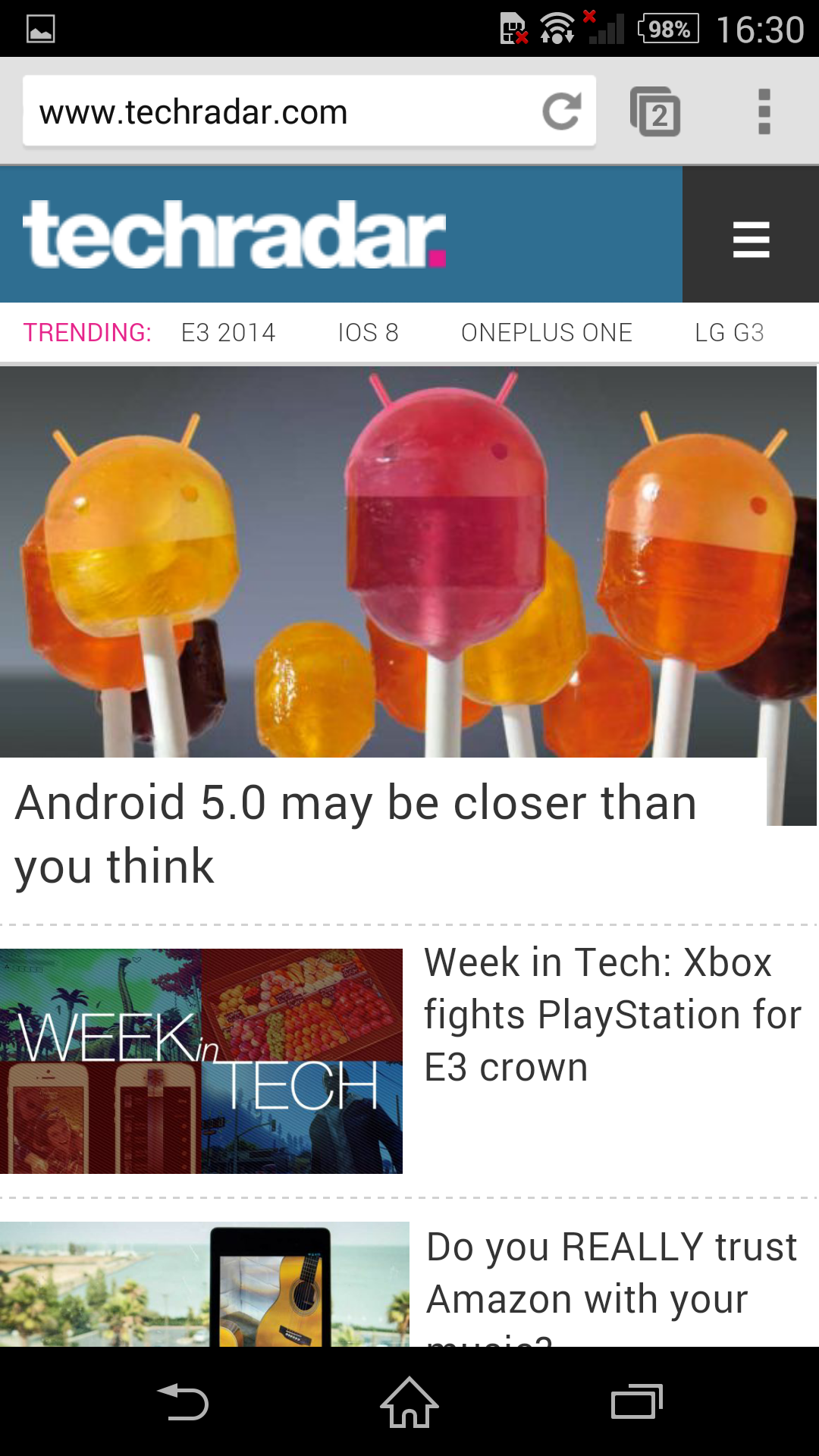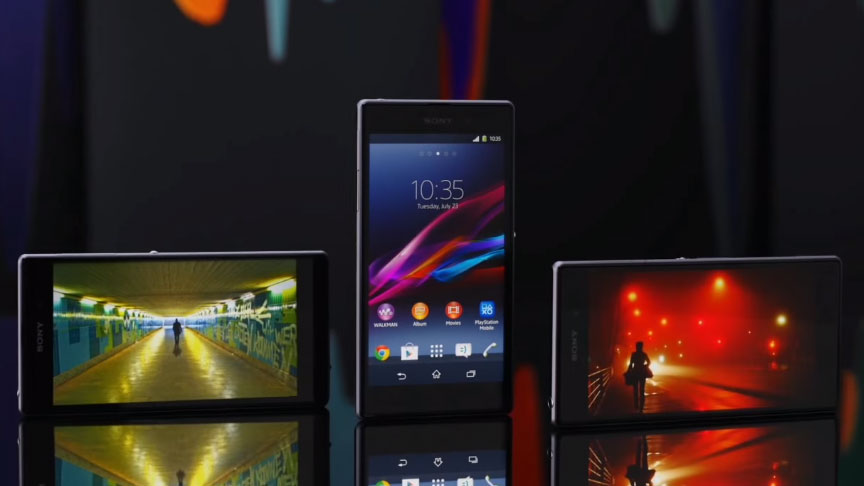Why you can trust TechRadar
Contacts and calling
The Z1's dialler is topped by four tabs, which access your contacts, the actual traditional number-pressing part you use to dial in any numbers you can actually remember, a starred collection of favourites for easy access and a fourth section dedicated to creating groups of contacts for simple mass SMS-ing of your friends.
The experience is built around your Google contacts, so once you're signed in with a Google email address, any old contacts you've previously added to another Android model (or typed into Gmail over the years) will pop up here.
Each of your contacts has their own little page, where you can add details such as their email addresses, instant messaging accounts, home addresses, web URLs and more. Plus there's the option to "Place on Home screen" – which sticks a little 1x1 icon on your Home screen, which you can use as a handy shortcut to quickly contact any people you bother regularly.
The dialler supports a form of smart dialling, where it's enough to start typing the first couple of letters from a contact's name for the Z1 to suggest matching numbers in the top half of the screen.
Given that you're likely to have contacts pulled in from various places and social sites, both with and without meaningful contact details, the OS lets you filter these down a little.
You can hide contacts without phone numbers (which will wipe out most Facebook and Twitter imports), show only people that are online in contactable apps, or choose to only see your Facebook friends and links to their profiles if you hate and would rather avoid spoken messages.
And on the odd occasion the Z1 forces you to stop poking it and actually talk to someone, the voice calling quality's great - very loud and relatively natural sounding.
If you'd rather not speak, a pull-up menu can be accessed whenever a call comes in, from which you can reject the caller with a preset SMS.
Messaging
Sony's email and messaging apps were updated as part of the Android 4.3 software refresh and now featuring a simpler look that's more in keeping with the stock Google code.
Which means the email app now features a toggle beside each message header, ideal for selecting and bining multiple spam messages.
The SMS tool threads messages for easy legibility, plus there's a nice little bonus in here in the form of a sketch tool. Open this while composing a text and you can do a little drawing, which the phone converts to a multimedia message and attaches to the text.
Other SMS options include adding previously taken photos, opening the camera to take a snap live and have it instantly converted and attached. Plus there's a dead handy 'Share my location' button that creates a shortcut to a URL of a Google Map of your precise location and whacks it into the SMS field for you.
The standard email app is also a masterclass in understatement, and it's all the better for its simplicity. The email app sets itself up automatically using login credentials from most major email providers, plus there's Exchange ActiveSync in there in case anyone needs a reason to try and put the purchase of the phone down as a legitimate tax expense.
Sony's keyboard, which is custom in appearance and lacks the long-press alternative characters and numbers that many keyboards use (by default – they can be added in via a menu toggle), is bang up to date when it comes to making the best of text input on mobile too.
The keyboard uses the gesture-based line drawing system for writing your words, by drawing one continuous line from letter to letter, as popularised by third-party keyboard Swype.
As well as this, it incorporates next word guessing, which analyses your typing style in an attempt to guess the next word you're about to write, a feature also pulled in from the unofficial keyboard word and used to such great effect in the SwiftKey app.
Both of these make typing simple, with the next word guessing ability often saving the day by managing to recreate a sentence you've previously typed – a joyous thing to discover when you've accidentally pressed back and quit an app and lost a chunk of text.
Internet
The Sony Xperia Z1 is simple when it comes to web use: you use Chrome. That's it. There is no Sony-made Browsing Unlimited option requiring a separate account, just Google's excellent little mobile browser powering everything and using the same account and systems as its popular desktop tool.

This means, once you've signed in with your Google account, you can access your desktop bookmarks on the Z1. Plus, if you want to go a step further, there's the option to have the phone synchronise desktop tabs with the mobile, meaning whatever you were browsing on PC is right there on your Z1 for easy access.
It even links pages recently read on other Android phones and tablets, so you can pull in web links from your tablet, too.
Given the power of the Xperia Z1's Snapdragon 800 chipset, web use is pretty decent here. Pages load and pop into life almost as quickly as they do on modest laptops, plus embedded content, adverts and the rest of the stuff that populates the periphery of most web pages is also handled with ease.
The 5-inch 1080p display makes text beautifully sharp and clear, plus the phone's power means zooming, rotating the phone to landscape view and managing tabs (no matter how many are open) never gets clunky or bogged down.
The BBC's iPlayer app works here perfectly well too, although the Z1 is not yet on the supported phone list when it comes to accessing the new download feature, so you're stuck watching live footage only at time of writing.
